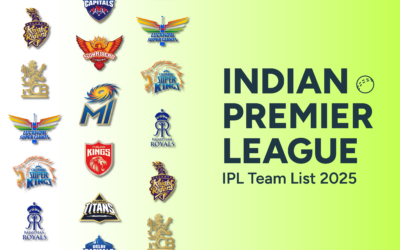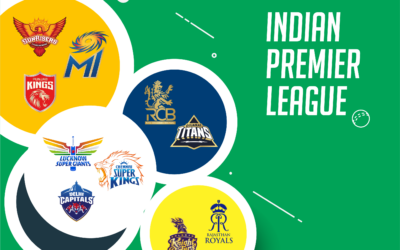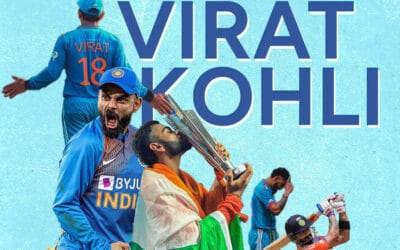Lalit Modi might have committed a lot of mistakes in his lifetime but he deserves all the respect for giving birth to the most watched cricket league across the globe. The idea of getting on board celebrities and business tycoons to own the franchise was never heard of. There was a high dose of Bollywood involved, although cricket and Bollywood had a connection from even before its conceptualisation. The luminary who laid the foundation for something which was going to be a landmark for other sports to follow in India knew what IPL as a brand could do.
The first match of the Indian Premier League took the world by storm thanks to the 158 scored by Kolkata Knight Riders’ Brendon McCullum which resulted in the defeat of Royal Challengers Bangalore (RCB). A lot has changed since then, so let us look into the things that have changed in the course of 12 years of the IPL.
#1. Icon Players
The IPL in its inception year (2008) came up with the idea include to include six icon players for six different teams. The icons were as follows : Sachin Tendulkar for MI , Sourav Ganguly for KKR, Rahul David for RCB, Yuvraj Singh for KXIP, Virender Sehwag DD (Delhi Capitals) and VVS Laxman for Hyderabad (Deccan Chargers).
This was done to draw maximum number of supporters to increase the fan base. The icon players belonged to the respective franchise city. It did help in the initial years as it created a lot of buzz among the locals. Come 2019 there is no more the concept of Icon players and every team can pick any player from the auction lot with the option of retaining a few players of the previous season and also use the right to match card to pick their previous year player sold to another team.
#2. Strategic Timeout
The concept of strategic timeout was only introduced in the year 2009 which was the league’s second edition. The differentiating factor was that during those days the timeout was for seven and a half minute. This long break in a way disrupted the flow of the game. The technical body amended it in the third edition and it was cut down to two and a half minute break.

This was a strategic move as it helped to save 10 minutes of time which could be devoted to other things and it also pleased the franchises to a great extent. The strategic timeout can be taken once, starting from the sixth over till the ninth over by the bowling side whereas the batting side has the option of taking this two-minute break once starting from the 13th over till the 16th over.
#3. Decision Review System (DRS)
Initially when DRS was introduced in level cricket Board of Control for Cricket (BCCI) in India was reluctant to use it because it was believed that this system was flawed. They were criticised for this but if one looks at it from the other way round BCCI was probably right in its approach.

BCCI went on to adopt the DRS in the 2016-2017 season against the visiting English side at home. Furthermore, they agreed to use the Decision Review System from the 2018 edition of the IPL where each team can only take one review per innings. The technology that is used in the same is ball-tracking and ultra-edge technology. In the IPL it was first used in the match between the Mumbai Indians (MI) and Chennai Super Kings (CSK) at the Wankhede Stadium in Mumbai in 2018.
#4. Broadcasting Rights
The broadcasting rights for the IPL was held by Sony Pictures Network and World Sports Group until 2017. This deal was done in the inaugural edition of the league and the ten year contract was for around Rs. 8200 crore. Sony was responsible for handling the domestic broadcasting whereas World Sports Group was entrusted with the responsibility to handle the broadcasting distribution internationally.
The year 2019 is different with regards to the broadcasting rights as Star India has the broadcasting rights which it acquired for a whopping amount of Rs. 16,347.5 crore in September 2017 for the 2018 edition. This was almost double of the previous deal. The consolidated media rights include both television and online streaming (OTT or over-the-top). This was a landmark deal and also made it the most expensive broadcast deal across any sport in India.
#5. LED Stumps
Over the last decade, it has been seen that technology is revolutionising the way sports is consumed across different platforms. The same has been with cricket and the use of LED lights in IPL matches is an example. The use of LED lights only happened in IPL’s ninth season which was in 2016. Now, this is seen regularly in every IPL match.

The rationale behind using this is that it enhances stadium experience and brings the spectators closer to the game. Credit for this goes to its inventor Bronte Eckermann who created Zings Patented Electronic Cricket Wicket. If the bails are not completely dislodged then it does not light up whereas if it is completely dislodged then the bails light up. It uses a microprocessor and the bail lights up within 1/1000th of a second.
The ecstasy surrounding the Indian Premier League is at an all time high. With the glitz and glamour it is bound to reach a pedestal where none would have ever imagined. At the end of the day it is important to understand that IPL as a brand needs to grow for the entire sports ecosystem in India to develop but this should not be done at the expense of destroying the sanctus of the gentleman’s game.
FOLLOW US ON INSTAGRAM FOR SPORTS MEMES AND REELS!




0 Comments